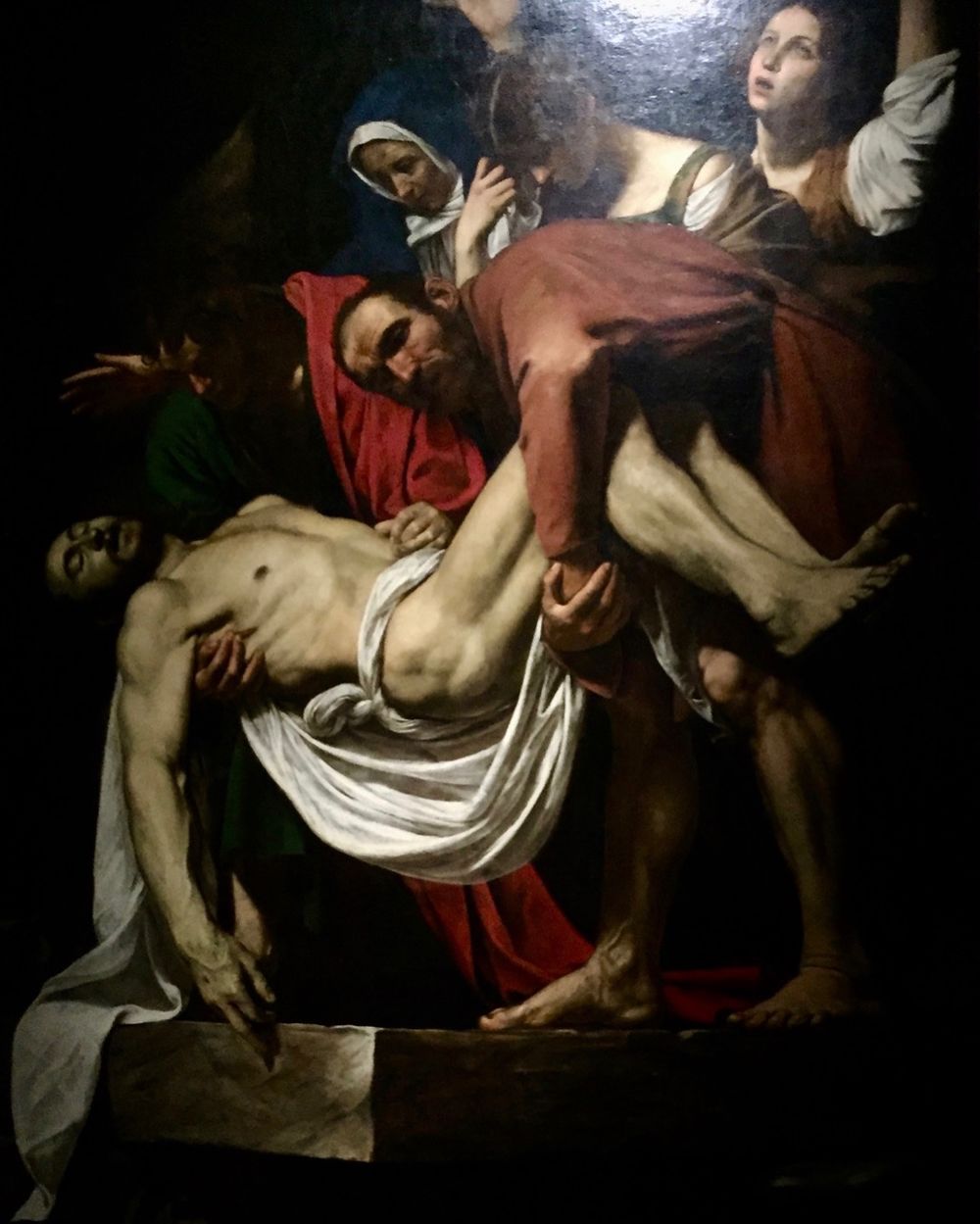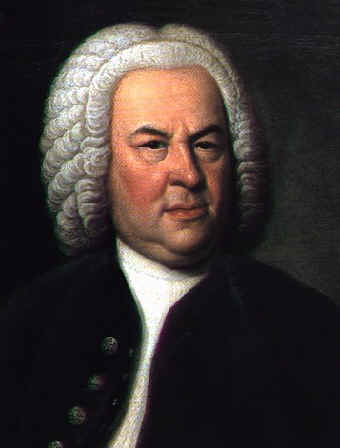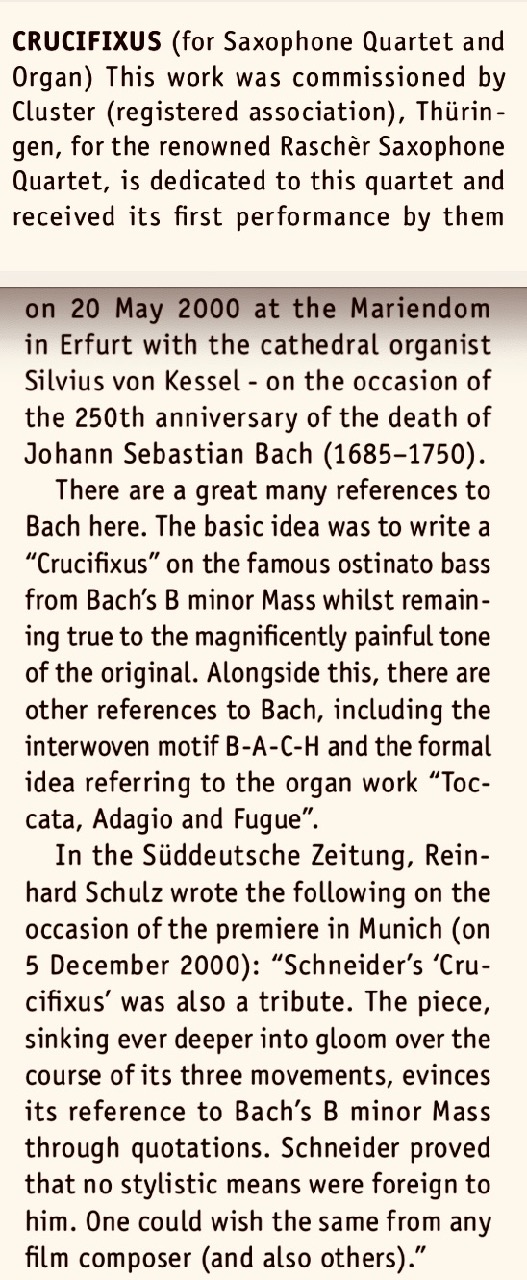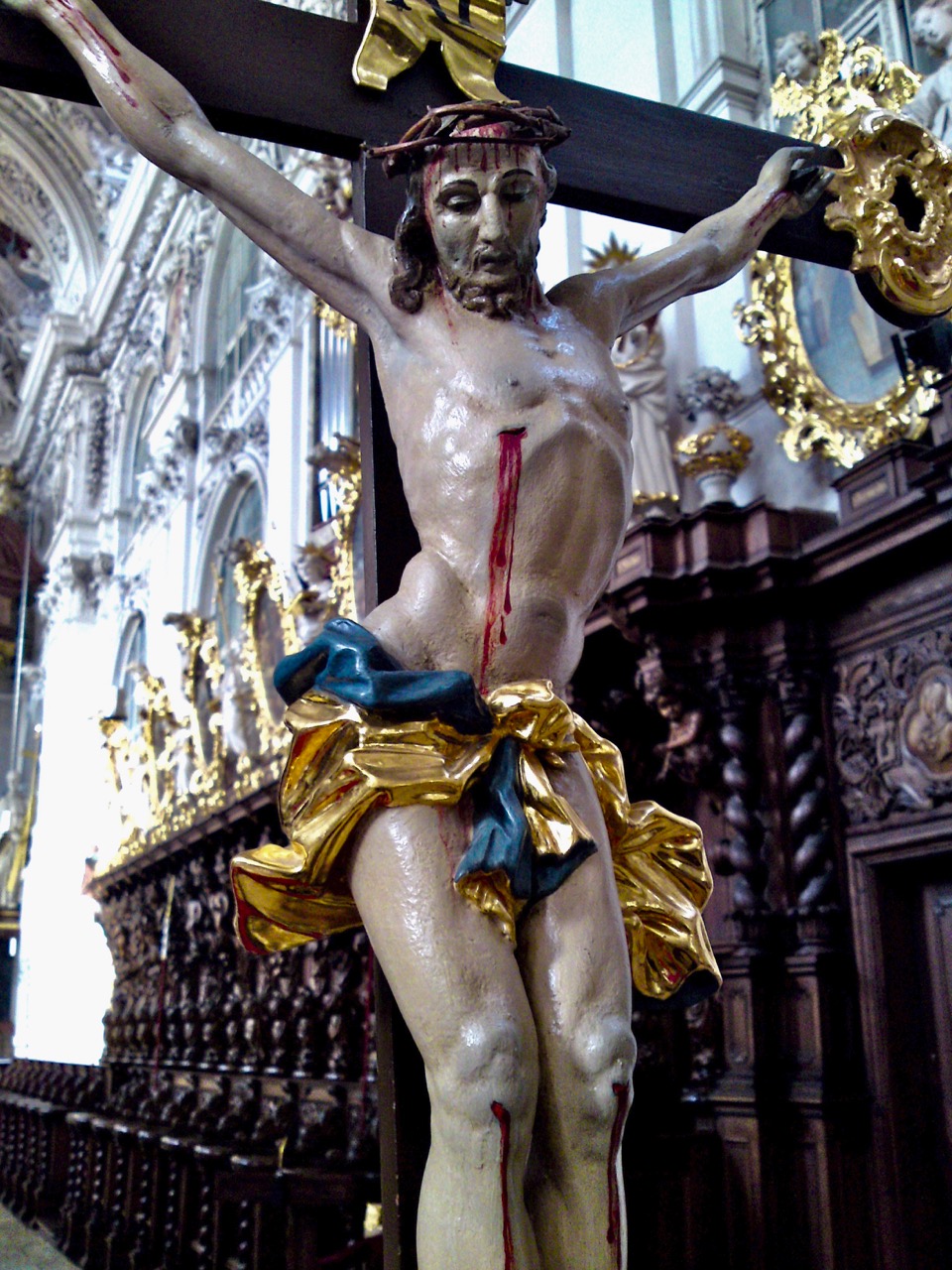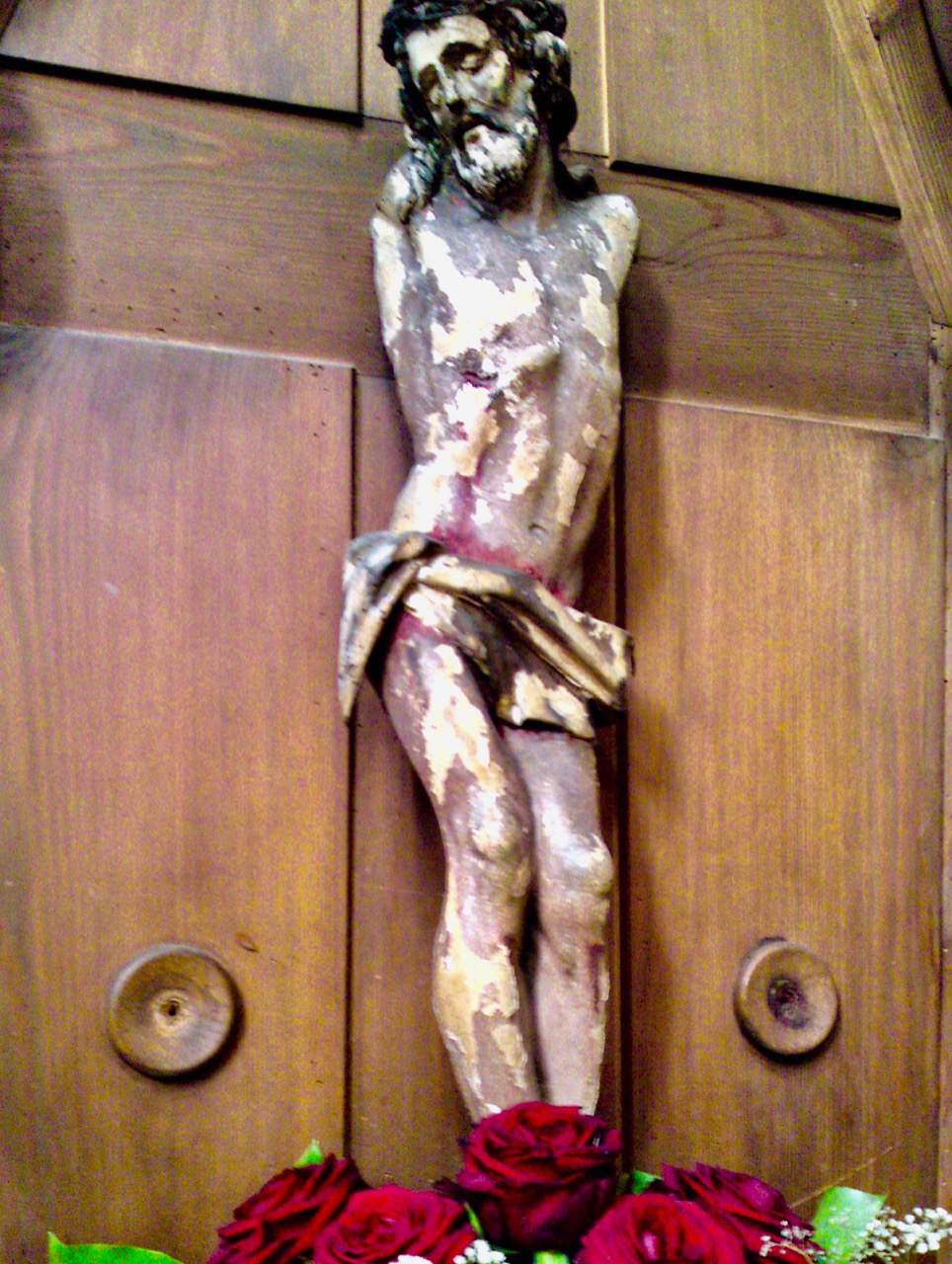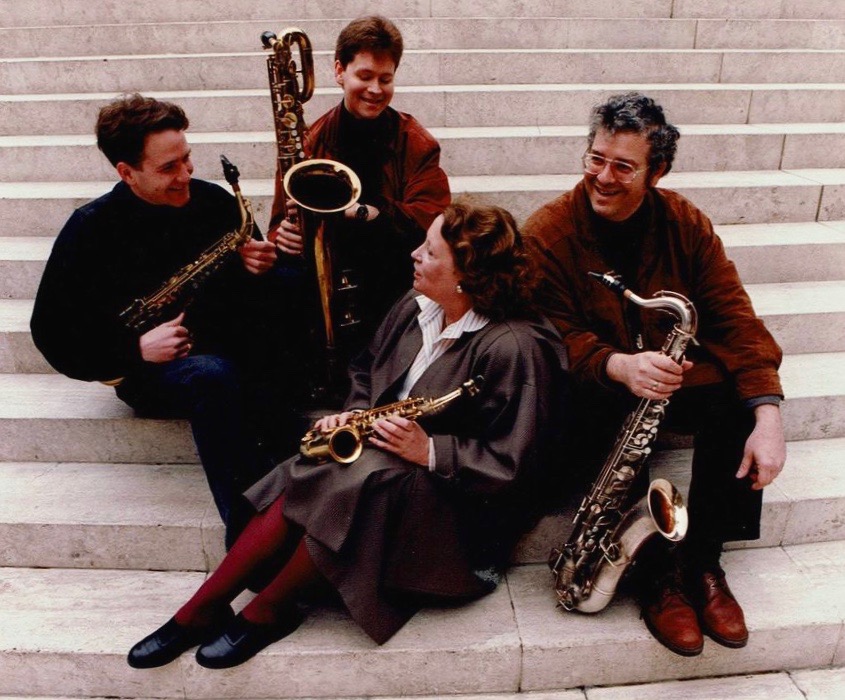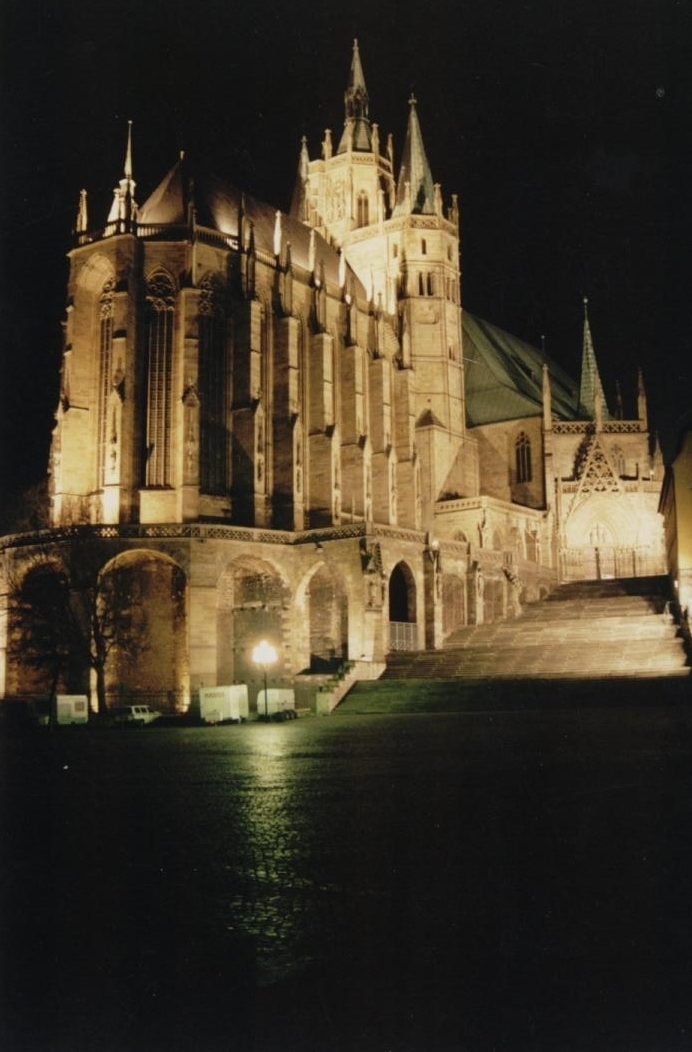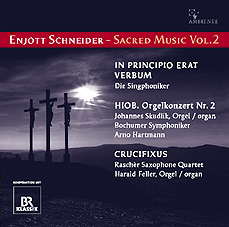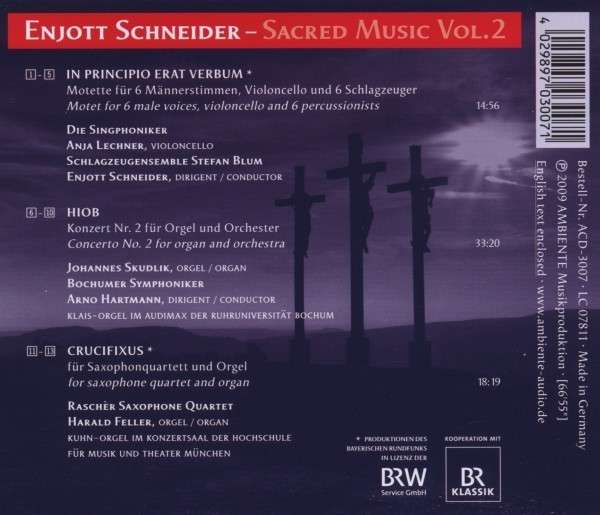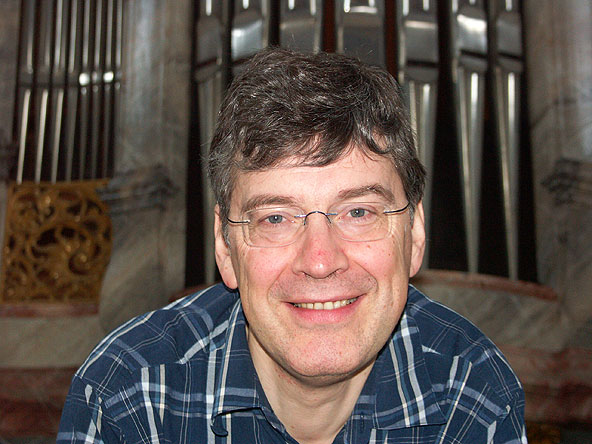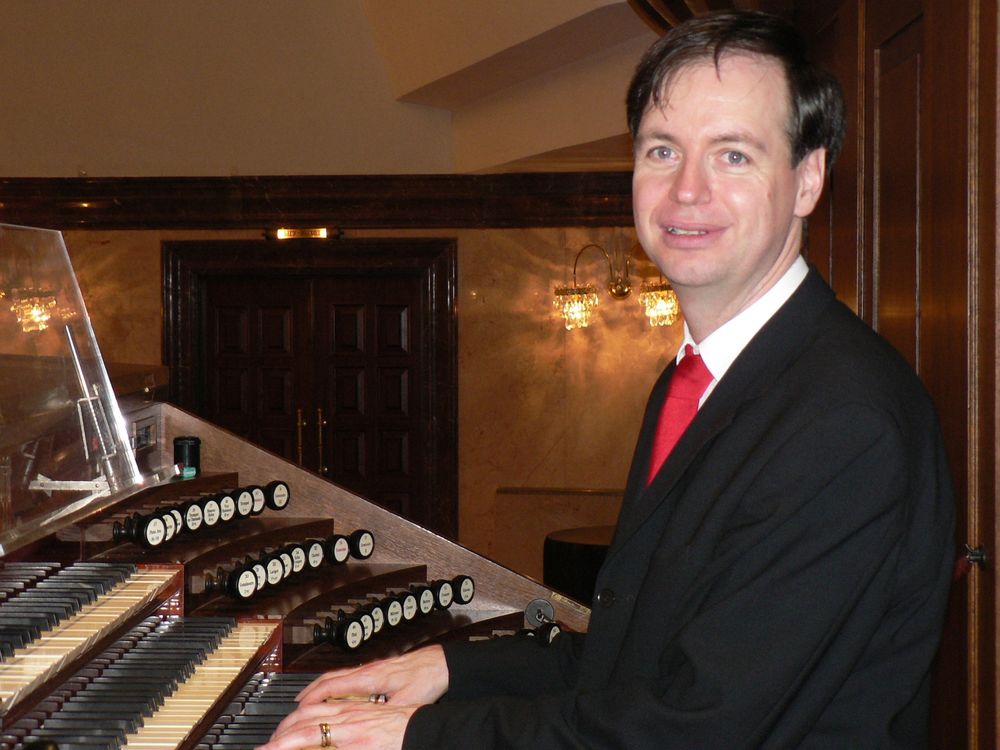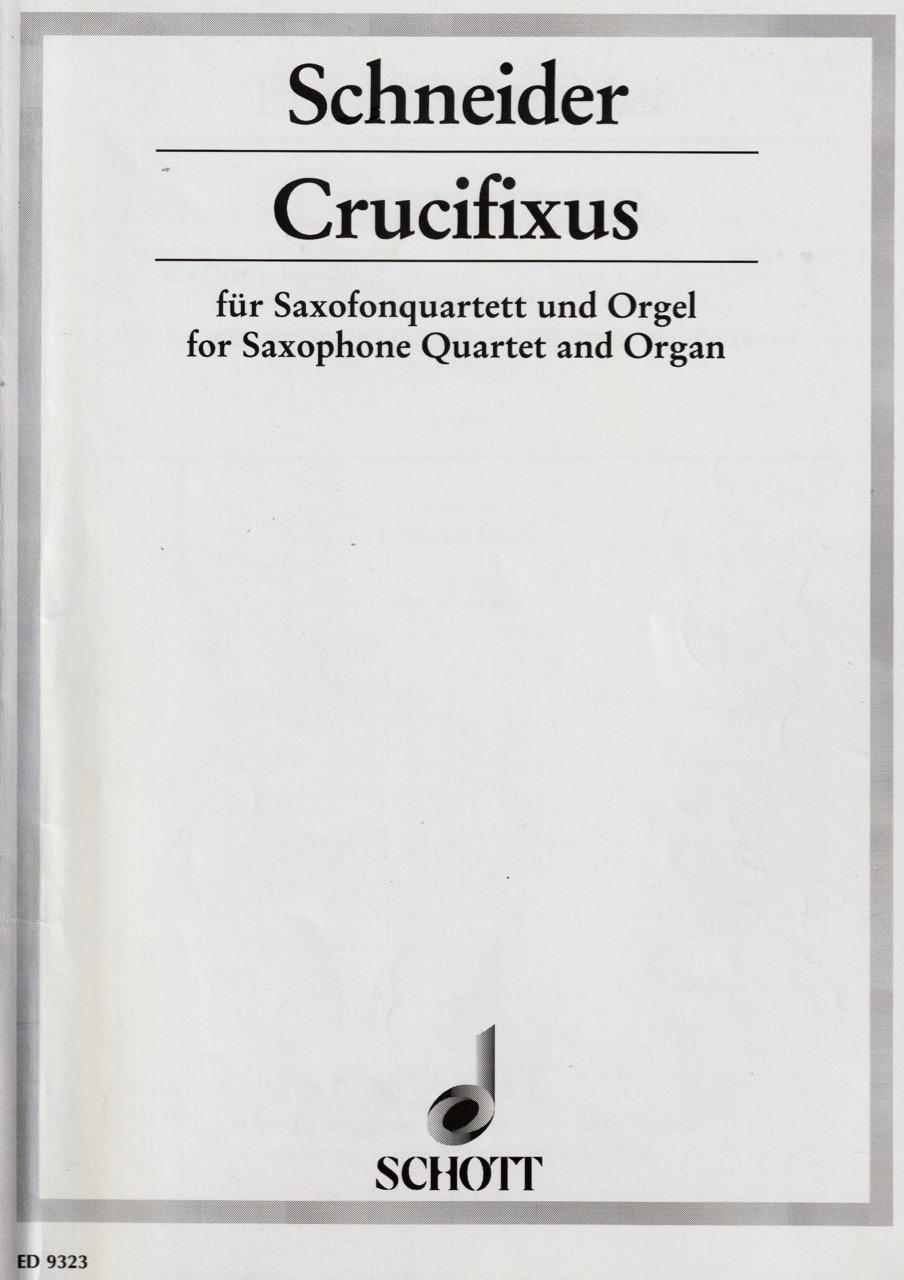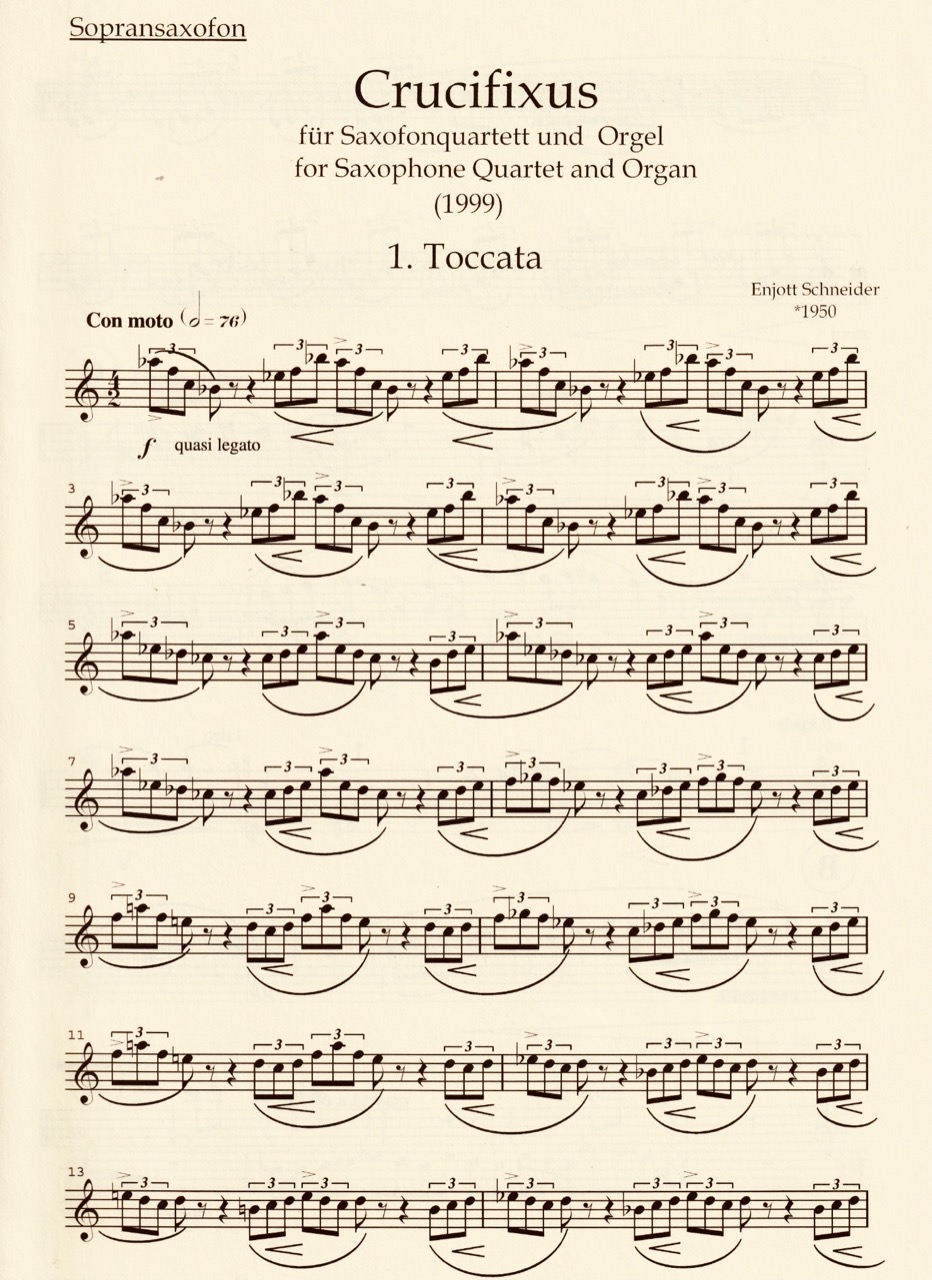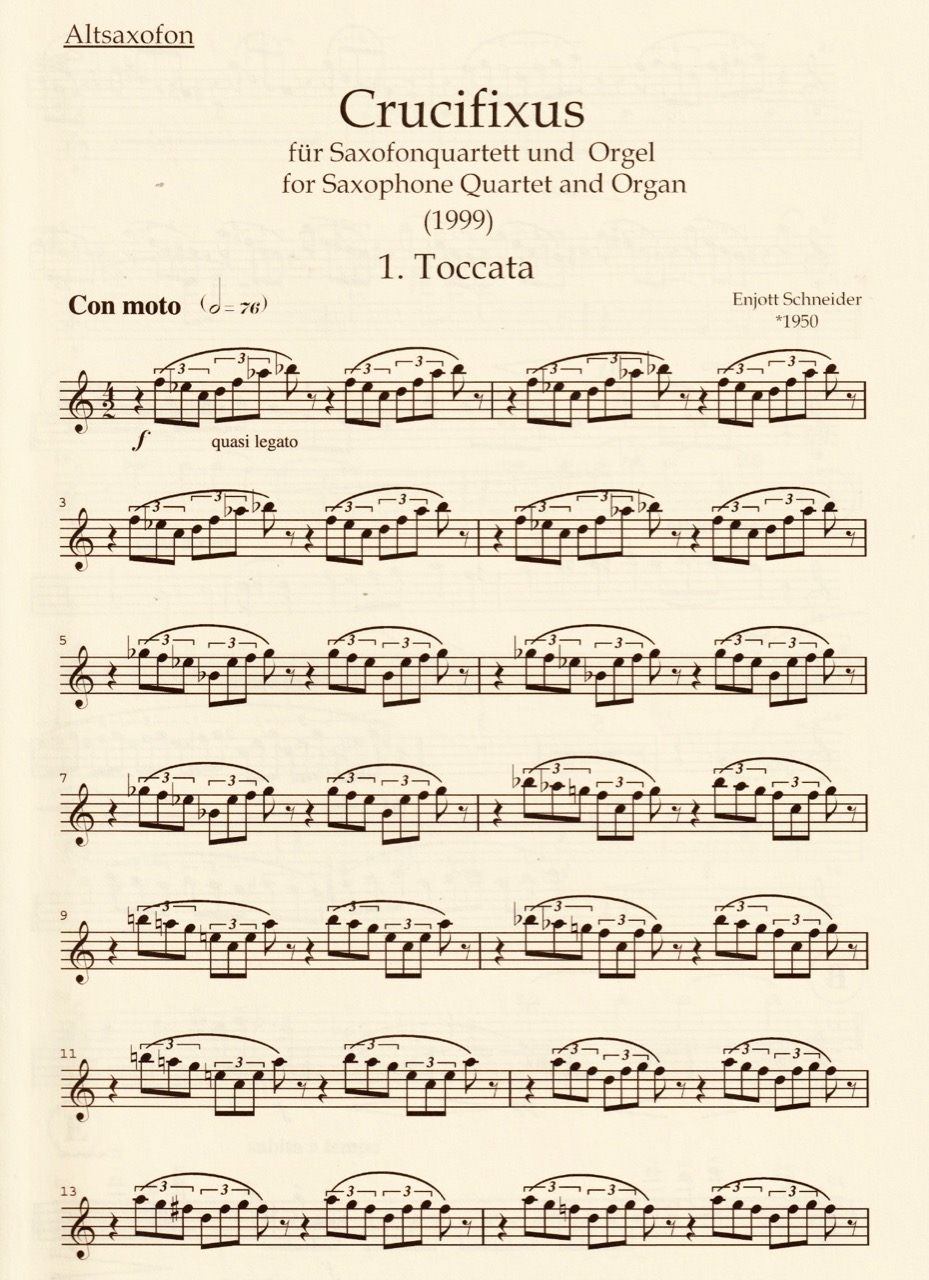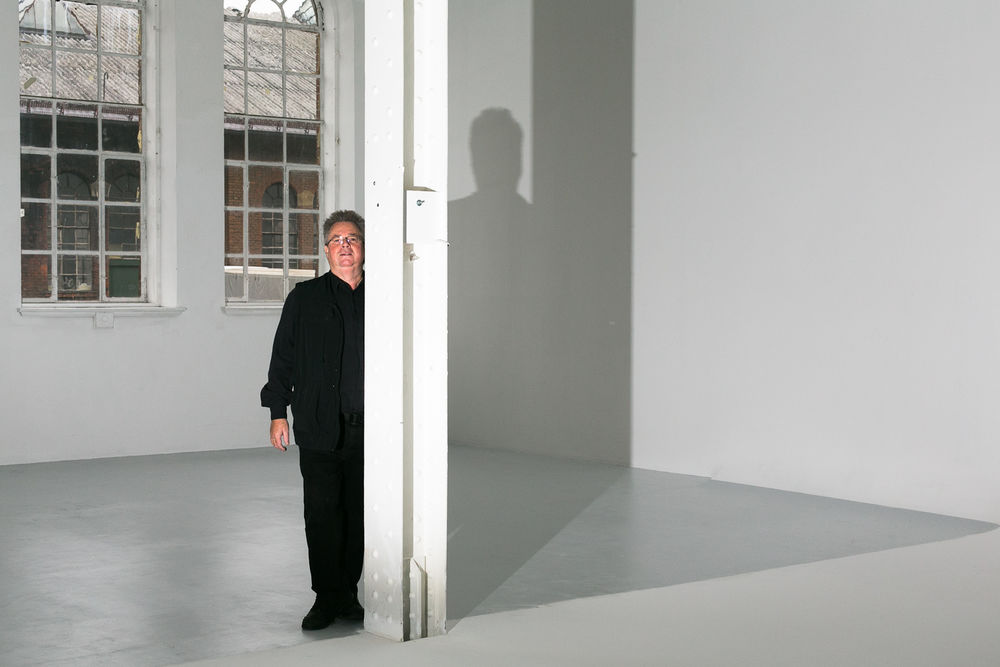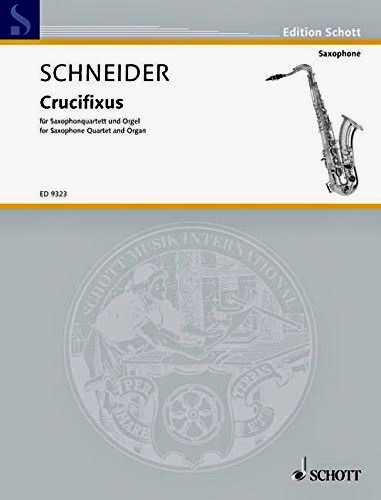
Category: Chamber Music , Organ / Sacred Music
The references to Bach are manifold: the basic idea was to write a 'Crucifixus' over the famous ostinato bass from Bach's Mass in B minor and to do justice to the magnificent painful tone of the original. In addition, there are other Bach references: for example, the interwoven tone motif B-A-C-H or the formal idea of his organ piece 'Toccata, Adagio and Fugue'. Commissioned by the Raschèr Saxophone Quartet. A monumental work that is very popular and is available in two CD recordings.
Movements: Toccata - Adagio - Marcia funebre (Fuge)
Duration: 18:30 (4:20 / 5:00 / 9:00)
Publisher of notes/sheet music: Schott Musikverlag , ED 9323 , 1999
Instrumentation: 4 saxophones (S A T B) and organ
Solo instruments: Orgel, Saxophon
Introduction: The work was commissioned by Cluster e.V. Thüringen for the famous Raschèr Saxophone Quartet, is dedicated to this quartet and was first performed by them on 20 May 2000 in Erfurt's Mariendom with cathedral organist Silvius von Kessel, - on the occasion of the 250th anniversary of the death of Johann Sebastian Bach (1685-1750).
The references to Bach are manifold: the basic idea was to write a 'Crucifixus' over the famous ostinato bass from Bach's Mass in B minor and to do justice to the magnificent painful tone of the original. In addition, there are other Bach references: for example, the interwoven tone motif B-A-C-H or the formal idea of his organ piece 'Toccata, Adagio and Fugue'.
Through its high expressivity, the striking three-part form takes on a remarkable force:
In the introductory Toccata, virtuoso tone cascades of minimal music are linked with the motif B-A-C-H, followed by a dark Adagio, which also contains elements of anger, struggle and percussive brutality. The finale then condenses the Bachian ostinato of the B minor Mass within the form types Funeral March & Fugue.
In the Süddeutsche Zeitung, Reinhard Schulz wrote on the occasion of the Munich premiere (on 5 December 2000): "Schneider's 'Crucifixus' was also a bow. The piece, which descends more and more into the sombre in its three movements, professed in quotations the reference to Bach's Mass in B minor. Schneider proved that no stylistic means are foreign to him. Which is something every film composer (and others) should wish for."
Dedication: dedicated to the Rascher Saxophone Quartet
World premiere: 05.08.2001, Dom in Erfurt
Performers at world premiere: Rascher Saxophone Quartet,
Silvius von Kessel (organ)
Press reviews for world premiere: Süddeutsche Zeitung zur Münchner Erstaufführung(5.12.2000)
A bow for Schneider's'Crucifixus'. The piece, in three movements, moves more and more to the sombre reference in Bach's B minor. Schneider proved that no stylistic means are foreign to him. What would be wished by every composer of film music.
Eine Verbeugung war auch Schneiders 'Crucifixus'. Das Stück, das in seinen drei Sätzen immer mehr ins Düstere absinkt, bekundete in Zitaten die Referenz an Bachs h-moll-Messe. Schneider bewies, dass ihm keine stilistischen Mittel fremd sind. Was jedem Filmkomponisten (und auch anderen) zu wünschen wäre.
(Reinhard Schulz)
Records: BR production December 2000, 2000
Performers on recording: Bavarian Radio: Rascher Quartet and Harald Feller (organ)
